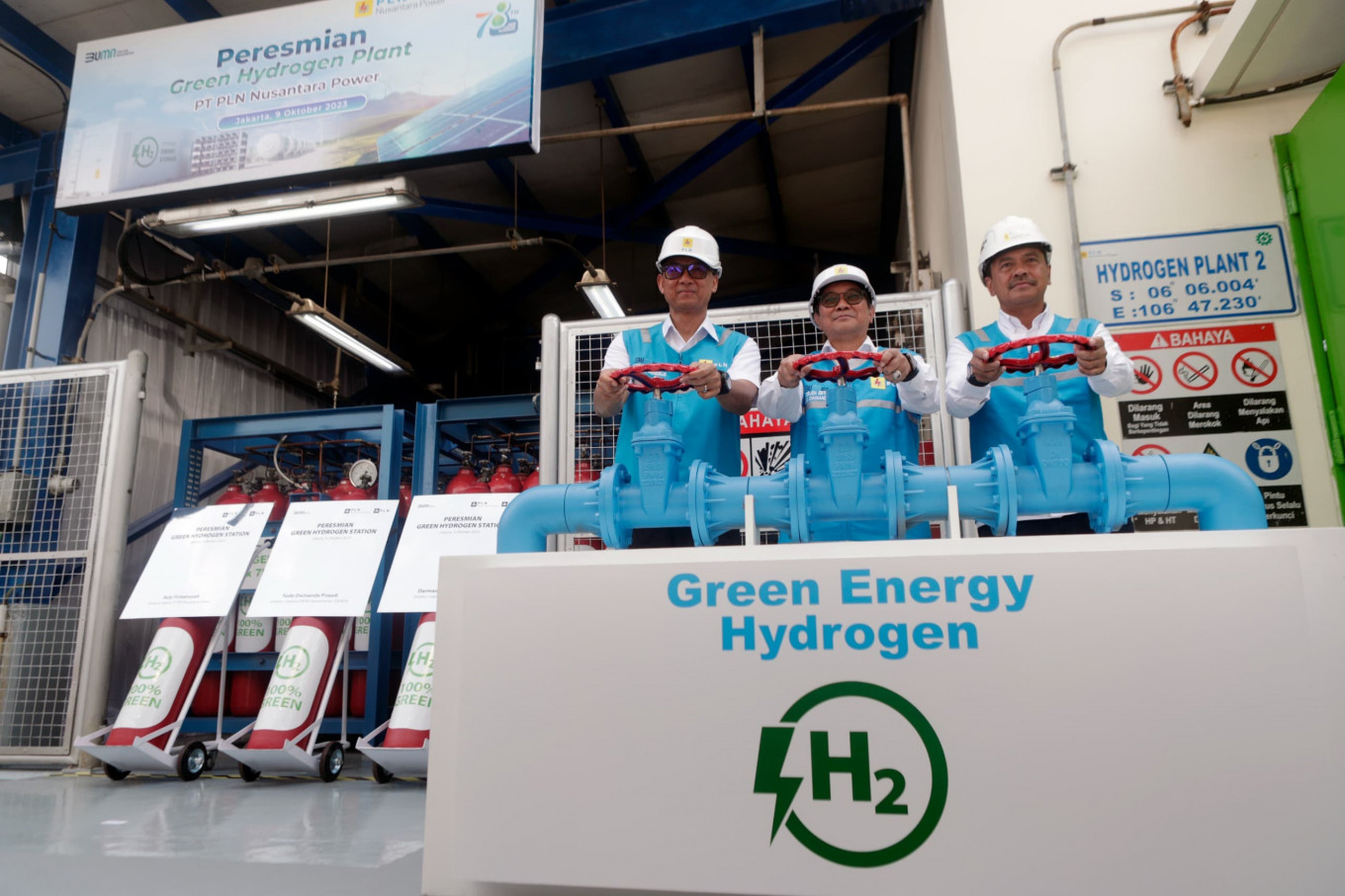Indonesia targets to become a hydrogen supplier in the global market with the country’s first green hydrogen plant, built by PLN (Persero), which commenced production earlier this month.

PLN has marked a groundbreaking achievement in Indonesia by inaugurating the country’s first Green Hydrogen Plant (GHP). (Photo: PLN)
The green hydrogen plant, situated within the Muara Karang steam gas power plant area in Jakarta, has the capacity to generate 51 tons of hydrogen annually.
Green hydrogen is a clean energy source due to its eco-friendliness, emitting only water vapor and leaving no residue in the air. This innovation aligns with Indonesia’s pledge to an energy transition aimed at achieving net zero emissions by 2060.
Yudo Dwinanda Priaadi, the Director General of New, Renewable Energy, and Energy Conservation at the Ministry of Energy and Mineral Resources, emphasized the government’s dedication to fostering green hydrogen and its potential for export, with neighboring countries like Singapore expressing interest in its production.
The hydrogen plant constructed by PLN Nusantara Power is sourced from solar power plants within the Muara Karang area.
Out of the annual 51 ton production, 43 tons can be used to power 147 vehicles covering a daily distance of 100 km. This transition to green hydrogen significantly reduces carbon emissions.
In addition to transportation, green hydrogen can be applied in various industrial sectors, including steel production, concrete manufacturing, and chemical and fertilizer production.
The plant at Muara Karang serves as a launching point, with plans to build similar facilities at other PLN Nusantara Power generators on the island of Java, potentially reaching an annual production capacity of around 150 tons.
Indonesia’s National Research and Innovation Agency (BRIN) aims the nation to become a hydrogen supplier in the global market to realize net zero.
BRIN's Deputy Head, Amarulla Octavian, said in a webinar titled "Clean Energy in Supporting Low Carbon Programs" on Oct. 17, "By using hydrogen as an energy source, we can become a global market supplier."
He said that his side, which focuses on studies and recommendations on clean energy in Indonesia, is conducting research on the hydrogen ecosystem map.
The research includes mastery of key technologies, such as the development of fuel cell materials and electrolysis, he said. Also includes hydrogen storage technology, green hydrogen production, as well as the use of hydrogen as fuel in the transportation or hydrogen vehicle sector.
Apart from green hydrogen, Indonesian government is committed to developing solar power plants that are targeted to become its main energy source by 2060.









